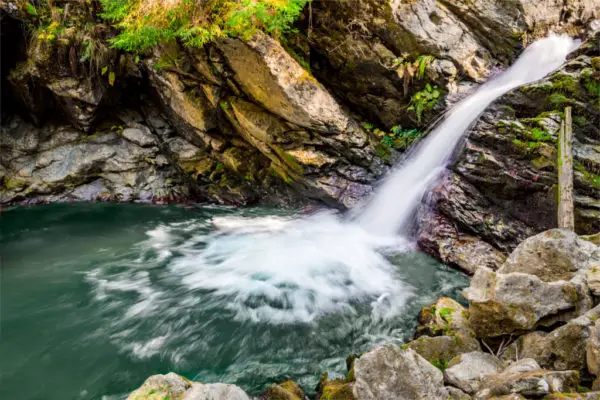As you’ve been setting up your new waterfall, you’ve realized that you already have a sump pump just gathering dust from disuse, and you want to know if you can get away with using it instead of purchasing a brand new pump.
Because sump pumps can’t be used continuously and waterfalls need a constant source of water, they are not a reliable method for pumping water in a waterfall. If your pump is compatible for other purposes such as water features, it will often be mentioned on the box it came in.
Most sump pumps are designed specifically to remove water from the sump basin in your home’s basement, and therefore are not designed to pump constantly. However, if you decide that you don’t need your waterfall to be constantly running, you’ll want to make sure that it’s set up for optimal results.
Properly Using a Sump Pump
When using your pump, if there is a lot of mud or other debris floating around near the bottom of the water, prop up the pump to be higher than the muck.
Based on the quality of your sump pump, your sump pump can run continuously for a varied amount of time. A higher quality pump can run for 20-24 hours continuously, whereas a lower quality pump might only be able to run 6-18 hours before requiring time to cool down.
Using a programmable timer, set the pump to run for a time based on its capacity. Do not set it to run longer than the recommended time as this can shorten the life of your pump. Let your pump rest for a few hours before starting it up again.
Drawbacks of Using a Sump Pump
While having a sump pump for your waterfall may seem to be the most convenient at the time, you need to be sure that the benefits outweigh the cost. We’ve already discussed how a sump pump will not be able to be run all the time, but those aren’t the only things you need to take into consideration when deciding on using a sump pump instead of a pump designed for ponds and waterfalls.
Because sump pumps are not designed to be used continuously, they often run hot and can warm the water significantly. This can be particularly problematic if your waterfall flows into a fish pond where the temperatures need to be kept fairly consistent. Higher water temperatures can also encourage the growth of algae.
Some sump pumps also have oil in them and have the potential to leak. Not only would this be bad for your fish or any other plants that you might keep around your waterfall, but oil can also be difficult and time-consuming to clean up.
Sump pumps are also less energy efficient than a typical pond pump or garden feature pump which are both designed to run consistently. While you may save money upfront by using the sump pump you already have, it will use more energy than a new pump, unnecessarily driving up your utility bill.
In the end, buying a proper pump meant for water features will save you money, and who doesn’t like saving money?
Choosing the Right Pump
So now that you’ve decided that you really do need to buy a proper pump for your waterfall, you need to decide on the right pump for you. As we can see with the sump pump, not all pump are created equal, and that’s true even when the pumps are designed for the job you are giving them.
First when choosing your pump, you need to know how powerful you need your pump to be. For every inch wide you plan on making your waterfall, you will need the your pump to be capable of pumping 100 gallons per hour.
If you want your waterfall to be a bit noisier and have more “white water,” you will want to raise that rate to 200 gallons per water. That means, if you want your waterfall to be two feet wide, you will want your pump to have a flow rate of 2400 to 4800 gallons an hour.
If your waterfall also is connected to a pond, you will also want to make sure that the pump is powerful enough to filter the entire pond at least once every two hours. This means that if you have a 1000 gallon pond, you will need the pump to be able to filter through it at least 500 gallons an hour.
While you may already be getting the power that you need from getting the pump for your waterfall, be sure to take that into consideration especially if you have a larger pond.
There are three main types of pumps to choose from: the Mag Drive, Asynchronous and Hybrid, and Direct Drive.
The Mag Drive pump is on the lower end of the spectrum and can pump anywhere from 40 to 3000 gallons per hour. It also comes with lower pressure, making these best for smaller ponds and “spitters,” which are small fountain-like features that “spit” water into a pond. These pumps are inexpensive and have a good life span.
Asynchronous and Hybrid pumps have a higher flow rate and power and are good for medium to larger ponds and features. The hybrid pumps have a range of up to 10000 gallons per hour where the asynchronous pump can pump up to 4500 gallons per hour.
Direct Drive pumps are designed with high pressure and flow rate in mind. They can pump up to 12000 gallons per hour and can be slightly more expensive than other pumps. They contain nontoxic oil that is safe if it leaks into a pond. These pumps are also slightly more prone to having water leaks, which can cause water to enter the electrical motor, causing it to short out.
